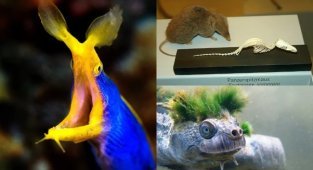Tube-nosed Fruit Bat: Strange nostrils and a panicky fear of the moon. Flying monster from the southeast (8 photos)
Holding your tail like a pipe is so vulgar, hackneyed, banal... All bushy-tailed mammals do this. Let's better keep our nostrils open! This is not only stylish, but also effective; tube-nosed fruit bats will not let you lie. 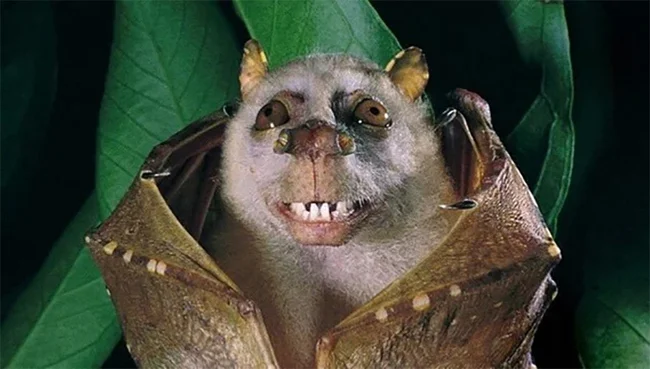
If you don’t look at the physiognomy, the tubenosed fruit bats are unremarkable bats. Lives in Australia, Indonesia and the Philippines. They do not shine in size - their carcass grows up to 15 centimeters. They do not drink blood - like all fruit bats, our tube-nosed friend feeds on fruits and nectar. But if you study the life of the fruit bat better, it turns out that the animal has its own dark secret. 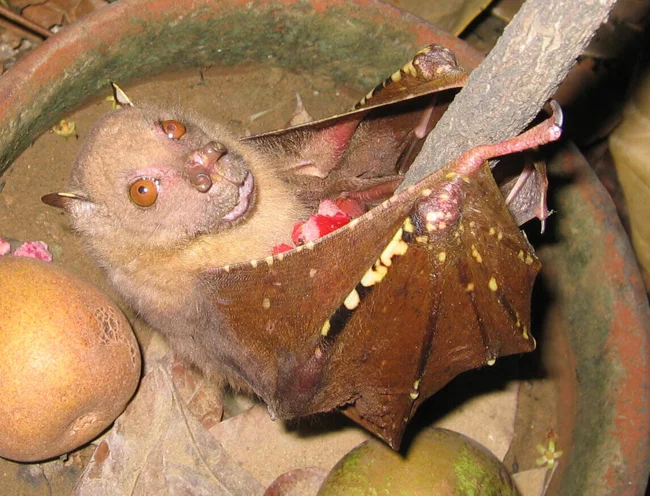
Hmmm, it’s clear why these guys don’t show themselves in public during the day...
This animal absolutely does not tolerate light. The fruit bat does all its business at night. It would seem nothing special. All bats are children of darkness. Only our hero is the only nocturnal animal that is afraid of... the moon. Do they turn into vampires under its light? No, they remained peaceful vegans as they were. It’s just that fruit bats are too familiar with the expression “nothing lasts forever under the sun.” 
The fact is that the brighter the light, the more active the night predators, in particular, owls. A sky spotlight illuminates all the prey for them: mice, birds and fruit bats. The latter are well aware of this, so bats do not fly out to fish during the full moon. But when the Earth’s satellite hides behind the clouds, the fruit bats begin to enjoy freedom. 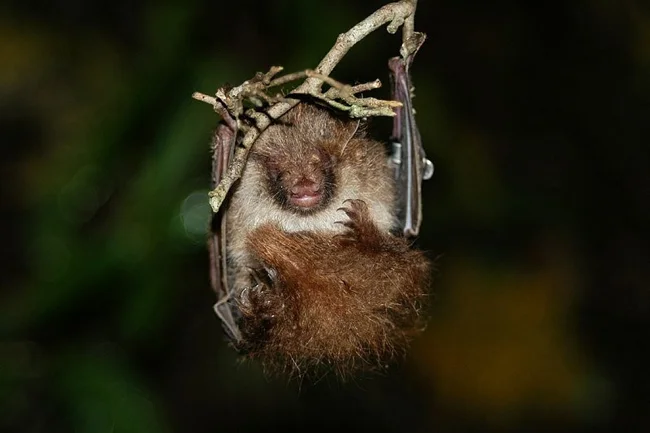
Hides from owls, pretending to be a useless ball of fluff.
The animals are not picky when it comes to food; they happily gobble up any fruit they find in the jungle. The fruit bats know that the clouds won’t be in the sky forever, so they crack so loudly that you can hear a crackling sound behind your ears on ultrasound. Having filled its belly, the bat tries to take the supplement with it. The animal's carrying capacity is 25 grams, half its own weight! 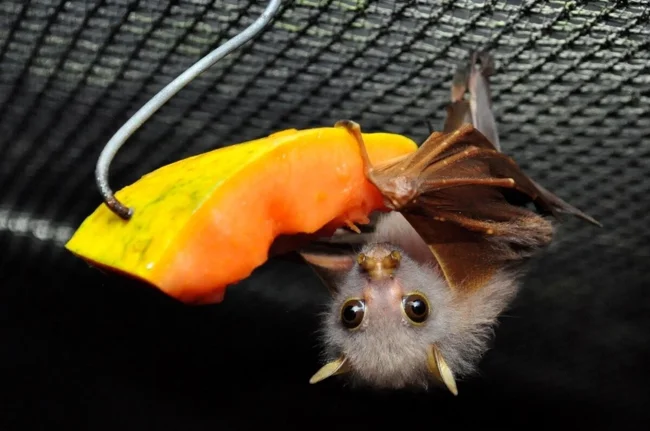
Babies fly in almost complete darkness, relying on echolocation and telescopic nostrils that are perfect for sniffing out their surroundings! The sense of smell of fruit bats is a bit like the eyes of chameleons: the nostrils are able to move independently of each other and even close. Such a radar nose will detect everything: from overdue trees in trees to fellow tribesmen wanting to mate. 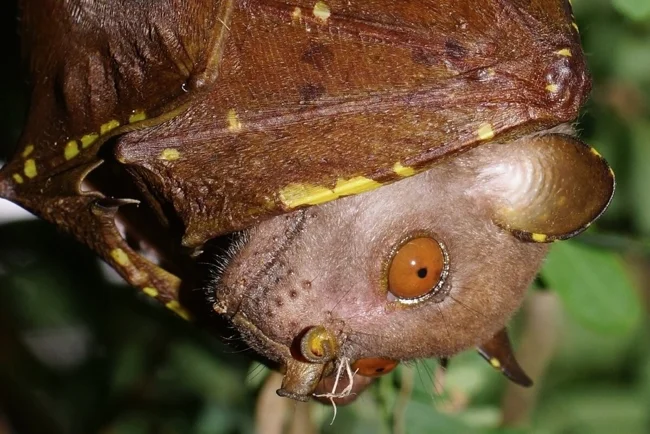
Their personal and family life is hidden in the darkness of the night and dense treetops. We can only say that they breed once a year, in October-December. The offspring, which is always alone, hangs on the mother for 4 months, after which it successfully separates. Following the example of the elders, the baby will find a small shelter under a rock, in a hollow tree or right in the foliage. These animals generally do not hang out in crowds, although they gather in small groups from time to time. 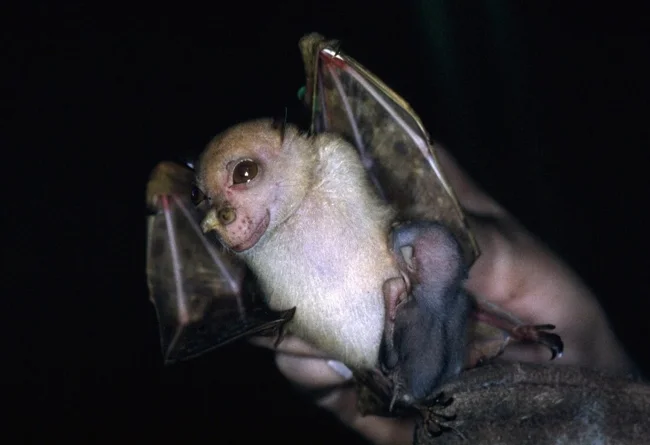
The lifespan of tubenosed fruit bats is unknown, but similar-sized relatives from Europe can live up to 30 years. Scientists will definitely answer this question as soon as they figure out the number of species in the family of mysterious animals. Mice have been known to European science since the 18th century, and during this time only 14 species of long-nosed mice have been counted. Moreover, the last of them was opened in 2017! 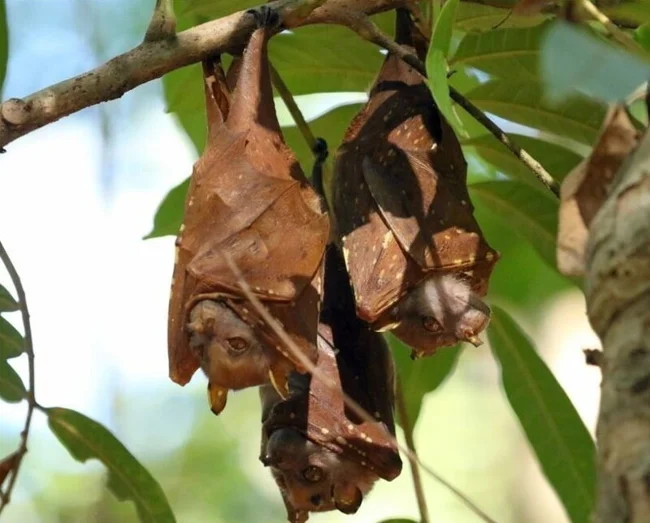
This is not surprising; it is easier to find a straw in a stack of needles than a fruit bat in the crown of a tree on a moonless night. Perhaps this is why many of them have a wide range to this day - they simply do not come across to people!
